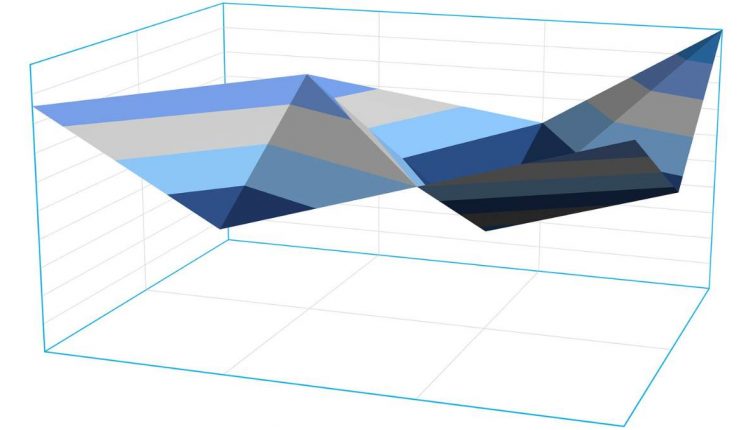Simply put, Public Relations (PR) is a job where people help companies or people communicate better with others. They might write press releases or talk to journalists to make sure the right information gets out. In the future, there will be some changes to how people do PR.
One of the changes is that people will use data more to make decisions. Data means information that comes from things like social media, surveys, or website traffic. People will use this information to figure out what people like and don’t like, and then they will use that information to make decisions about how to communicate with them.
Another change is that people will try harder to make sure they talk to the right people. This means they will look at the data to find out who likes what kind of things, and then they will try to talk to those people in a way that they will understand and like. This is called audience segmentation and personalization.
Another change is that people will use new technologies like virtual reality, artificial intelligence, and voice assistants to communicate with others. These technologies will help people to communicate in new ways and reach more people.
Finally, people will focus more on managing their reputation. This means they will try to make sure people think good things about them by watching what people say online and responding to them when they have negative things to say.
To be successful in the future, people who do PR will need to learn about data and how to use it, be good at talking to different kinds of people, and be familiar with new technologies.
Make predictions about future outcomes
Use predictive analytics, statistical algorithms and machine learning techniques to analyze data and make predictions about future outcomes for the profession of PR.
Predictive analytics, statistical algorithms, and machine learning techniques can be applied to analyze data and make predictions about future outcomes for the profession of public relations (PR). Here are some examples of how these techniques can be used in PR:
Sentiment analysis: Sentiment analysis is a technique that uses natural language processing (NLP) and machine learning algorithms to identify and extract the sentiment of a piece of text. This technique can be used in PR to analyze social media conversations and online news articles to understand the sentiment of the public towards a brand, product, or service. Based on this analysis, PR professionals can take corrective measures to improve the brand’s reputation.
Predictive modeling: Predictive modeling is a technique that uses statistical algorithms and machine learning to analyze historical data and make predictions about future outcomes. In PR, predictive modeling can be used to forecast the success of a PR campaign or the impact of a crisis on a brand’s reputation. This can help PR professionals to optimize their campaigns and plan for contingencies.
Network analysis: Network analysis is a technique that uses graph theory to analyze the relationships between entities in a network. In PR, network analysis can be used to identify key influencers, journalists, and media outlets that have a significant impact on a brand’s reputation. Based on this analysis, PR professionals can prioritize their outreach efforts and develop targeted strategies to reach out to these influencers.
Recommendation systems: Recommendation systems are a type of machine learning algorithm that use historical data to make personalized recommendations to users. In PR, recommendation systems can be used to personalize communication with stakeholders such as journalists, investors, and customers. This can help PR professionals to build stronger relationships and improve the effectiveness of their communication efforts.
Overall, predictive analytics, statistical algorithms, and machine learning techniques have the potential to transform the field of PR by providing PR professionals with powerful tools to analyze data, make predictions, and optimize their communication efforts.
Future trends and patterns in PR
Here are some potential future trends and patterns in PR that you can consider when making data-driven decisions to earn more from your profession in the future:
Increased emphasis on data-driven decision making: As the importance of data and analytics continues to grow across industries, PR professionals will need to become more data literate and embrace data-driven decision making. This means investing in tools and technologies that enable data collection, analysis, and visualization, as well as developing the skills needed to interpret and act on insights derived from data.
Focus on audience segmentation and personalization: As consumers become increasingly fragmented and diverse, PR professionals will need to focus on audience segmentation and personalization to effectively reach and engage their target audiences. This means leveraging data to identify different audience segments, understand their needs and preferences, and tailor messaging and content accordingly.
Integration of emerging technologies: Emerging technologies such as AI, AR/VR, and voice assistants are poised to transform the way PR professionals engage with their audiences. PR professionals will need to keep pace with these technological developments and explore new ways to leverage them to enhance the effectiveness of their communication efforts.
Increased focus on reputation management: In an era of heightened scrutiny and accountability, PR professionals will need to prioritize reputation management to protect and enhance the reputation of their organizations or clients. This means monitoring and analyzing online sentiment, responding to negative comments and reviews, and proactively engaging with stakeholders to build trust and credibility.
To earn more from your profession in the future, you should consider making data-driven decisions that leverage these trends and patterns. This might involve investing in data analytics tools and technologies, developing new skills and competencies related to data analysis and interpretation, and exploring new communication channels and technologies. By staying ahead of the curve and embracing data-driven decision making, you can position yourself as a valuable asset to your organization or clients and command a higher salary or fees as a result.

